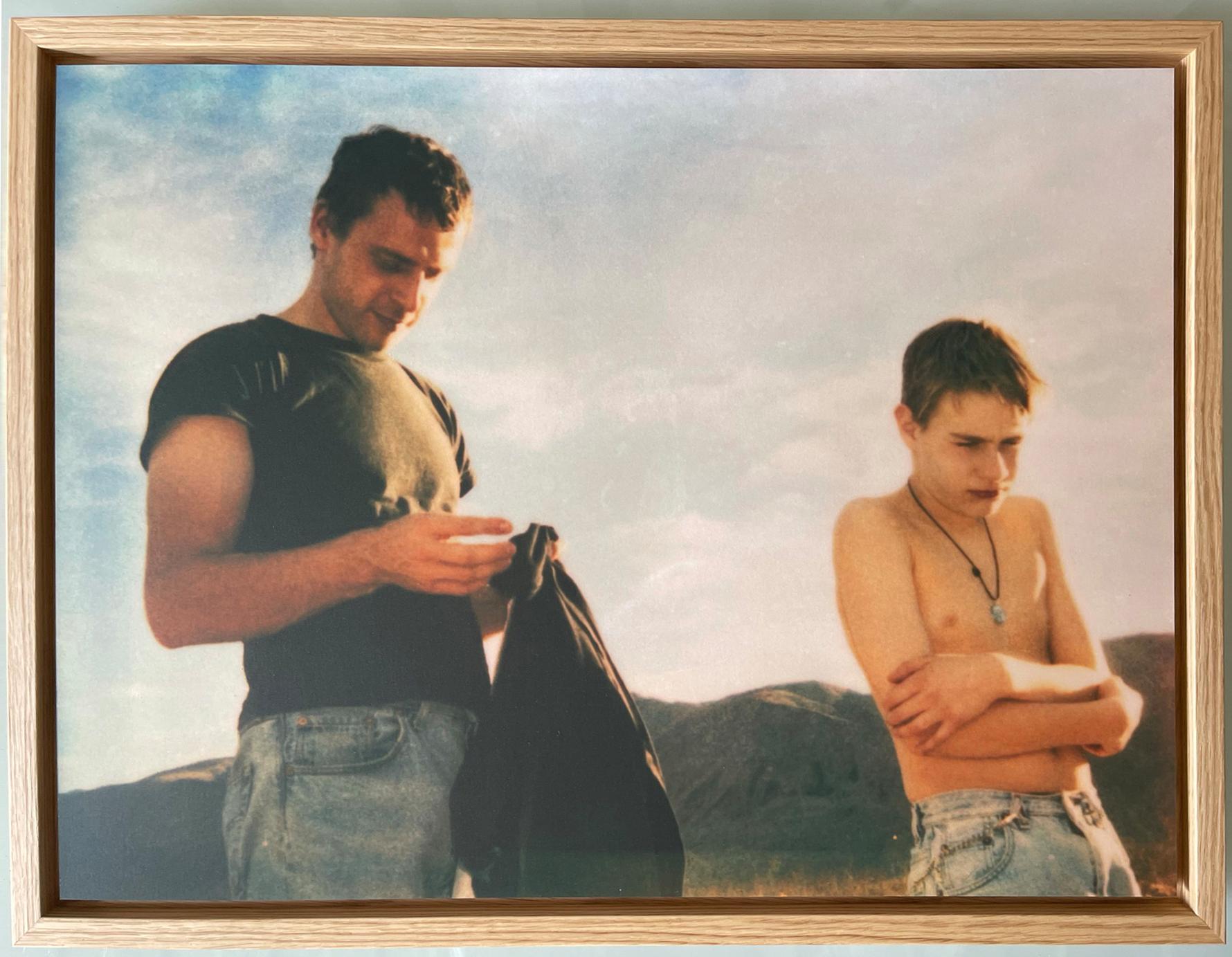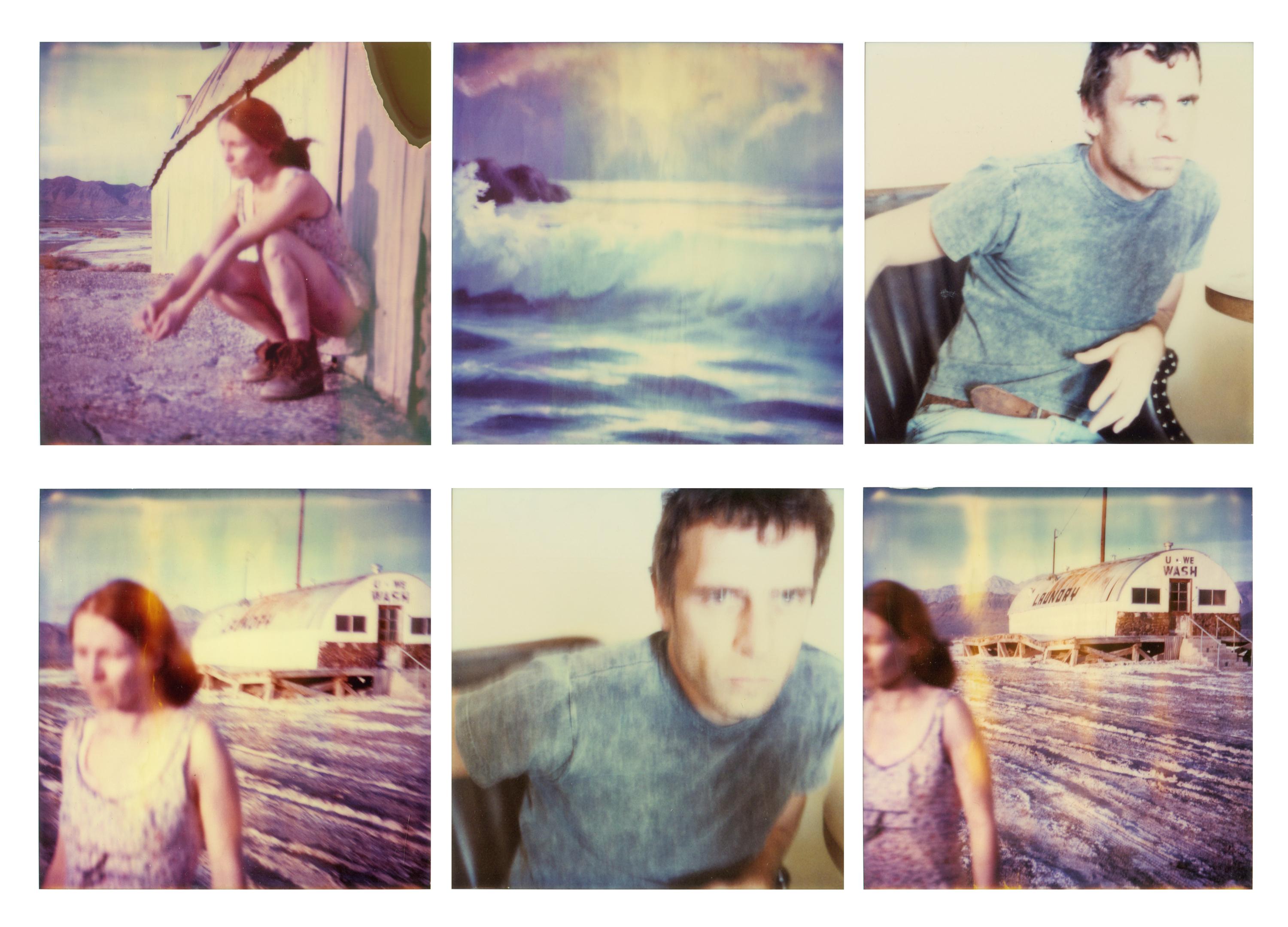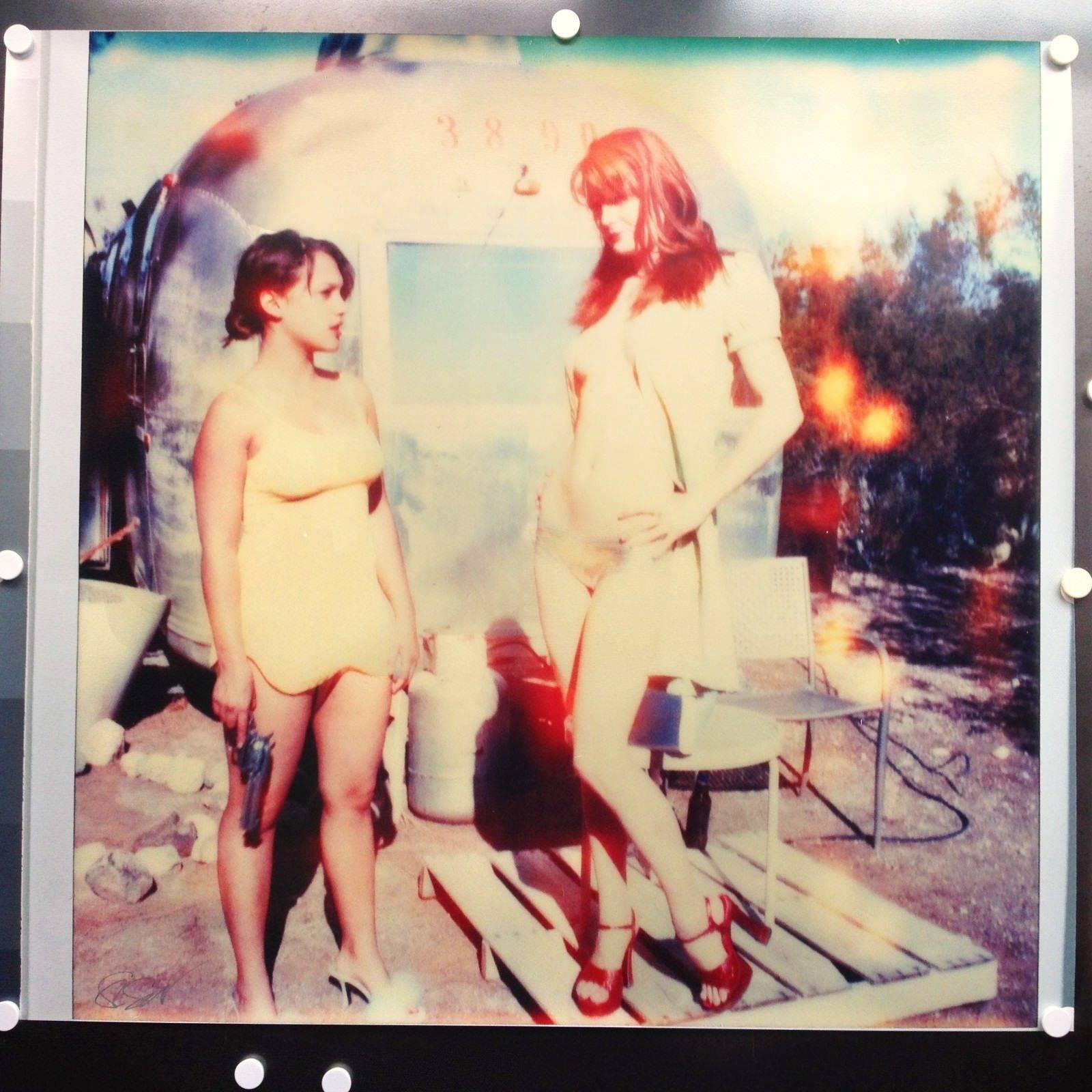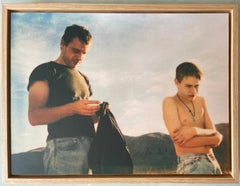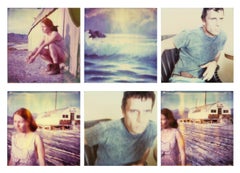Untitled (Beachshoot) - 2005
20x20cm,
Edition of 10, plus 2 Artist Proofs.
Archival C-Print, based on the Polaroid.
Certificate and Signature label.
Artist Inventory # 21395.
Not mounted.
Beachshoot
These photographic fantasies are determined by carefully chosen constraints and the use of symbolic attributes. Telegraph poles, airplanes, vast wastelands, a train bridge or a 50s American car tell in the same manner different stories, as do lurid wigs, kids toys, a headscarf or an old super 8 camera.
Schneider’s work feeds on anecdotes and story telling, but also on her specific European perspective on America. The world of her photographs is populated by narrow-chested boys and fragile girls, who do not seem to be aware of their own youth and beauty. Their light heartedness is invaded by a menacing grown-up world, to which they oppose their juvenile lack of compromise.
And actually her work does have an autobiographical aspect to it, since the artist makes herself and her friends the focus of the camera.
Stefanie Schneider photographs her ‘mises en scene’ with a Polaroid camera, of all things. The medium that is usually understood as a means to conserve documentary immediacy is being used in its opposite sense, since places, postures, costumes and especially the eye-catching image sections are staged. This technical ‘plot device’ mirrors her method as well as her purpose: the laureate of the German Folkwangschule in Essen uses only expired Polaroid material. Marks, scintillation, black empty smudges and massive changes in color add a second layer of reality to the shots and question the validity of imagery, the symbols and the relevance of proper memories.
From these picture that look amateurish and casual raise the impression of an authenticity on which we stumble from one moment to the next. - Petra Prahl
Stefanie Schneider's Polaroid photography and Andy Warhol's Polaroid photography both hold significance in the realm of instant photography, but they exhibit distinct approaches and contributions to the medium.
While Andy Warhol is renowned for his experimentation with Polaroid photography, particularly through his exploration of celebrity portraits and his innovative use of color, Stefanie Schneider's work takes the medium even further in terms of depth and narrative.
Schneider's Polaroid photographs go beyond capturing surface aesthetics. She delves into the realm of storytelling and evokes a strong sense of emotion through her compositions. By utilizing expired film and embracing its inherent imperfections, Schneider creates a dreamy and nostalgic quality in her images. Her work often explores themes of longing, loneliness, and the passage of time, inviting viewers to engage with the narratives she presents. In this sense, Schneider's Polaroid photography transcends the medium itself and becomes a vehicle for introspection and contemplation.
Warhol's Polaroid photographs have their own artistic merit, often capturing iconic figures and embracing the pop art aesthetic, they tend to emphasize the surface and the iconic status of the subjects. Warhol's approach is more focused on the immediate visual impact rather than delving into deeper narratives or emotions.
In terms of pushing the boundaries of Polaroid photography, Stefanie Schneider's work can be seen as a more significant progression. Her use of expired film, combined with her attention to composition, lighting, and vintage aesthetics, creates a distinct and immersive experience for viewers. She expands the possibilities of Polaroid photography by infusing it with a poetic and introspective quality, going beyond the instant capture to explore the realms of memory, time, and personal connection.
In summary, Andy Warhol's Polaroid photography is notable for its iconic subject matter and exploration of color, Stefanie Schneider's work takes Polaroid photography to new depths. Her emphasis on storytelling, emotion, and the transformative power of expired film sets her work apart and showcases her ability to elevate the medium into a realm of contemplation and artistic expression.

